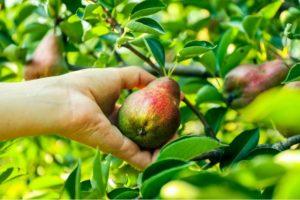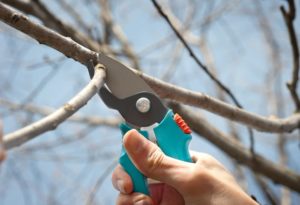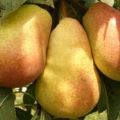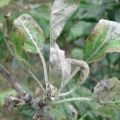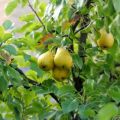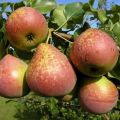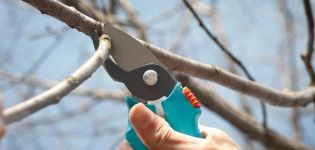Why do pear fruits rot on a tree and what to do, measures to combat the disease
Summer residents more and more often notice that a crop that gives great hopes begins to rot before reaching technical maturity. The most common cause is fungal diseases, which are ubiquitous. The primary source is a diseased specimen that overwintered under or on a plant. Therefore, it is important to know what to do if the pear is rotting on the tree. Measures taken in time will save the tree and the crop.
Possible causes of pear rot
Novice gardeners do not understand why the crop cracks and then rots on the crop. It's all the fault of the disease that affects the plant. Most often they occur:
- If the diseased specimen overwintered in the trunk circle or on a plant.
- Trees can become infected through the cracks of overripe pears. They can be triggered by scab, insect puncture. Spores enter through the cracks, and decay processes begin to take place inside, affecting the entire pear.
- In hot and humid summers, spores form on mummified pears, which are carried to nearby plantations by wind and insects. Thus, in a short time, all fruit crops can be infected with the disease.
Scab on fruits
If the fruits turn black, but remain edible and do not lose their taste, then the reason is scab. A sure sign is the appearance of an olive-colored bloom on the foliage, which turns brown over time.
As they ripen, the peel on the fruit becomes covered with numerous dots, which spoil their presentation, but inside they remain strong.
Moniliosis or fruit rot
New varieties of pears are famous for their good keeping quality and long shelf life. But if the disease hits the plant, then the fruits will rot faster than they have time to ripen. The main reason is a microscopic fungus that can penetrate into the pear through a small scratch. Moniliosis is capable of attacking pears and other fruit trees.
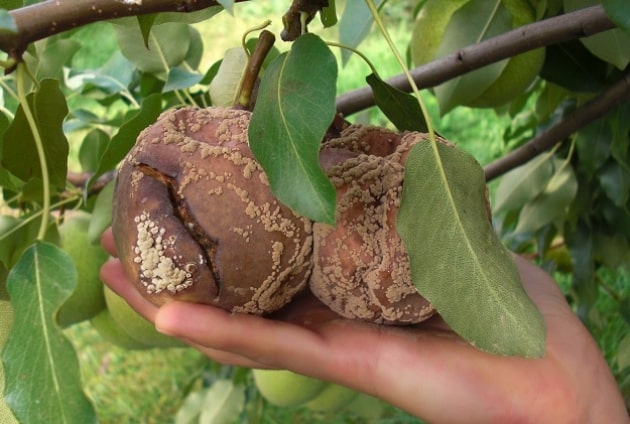
Spores of the fungus are easily carried by wind and insects. It develops best in warmth and moisture. Direct sunlight is the enemy of the disease. Therefore, moniliosis develops successfully in the thickened crown. The disease affects only mature specimens. The disease does not develop on a tree trunk. Therefore, if black spots appear on the fruits, then immediately it is necessary to remove and destroy them.
Old trees
Old trees that have exhausted their strength can cause pear to rot. The process starts from the ponytail while they are still hanging from the tree. Upon reaching technical maturity, the middle will be rotten.
Tips:
- If the affected pears are not removed in time, then rot will penetrate into healthy fruits through cracks on the surface.
- It is important to shoot specimens that have reached technical maturity on time, since overripe fruits burst, thereby giving a chance for fungal spores to penetrate inside. And as a result, after a short time, the pears inside rot and then wither.
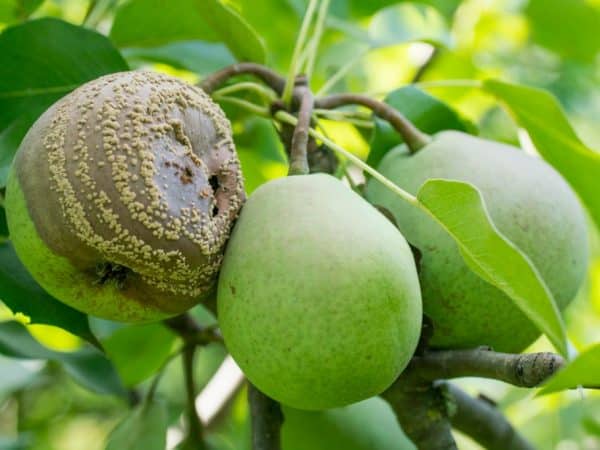
Moths
They are among the most active pests. Their food is the seeds of the fruit. In the process of eating, the insect infects pears with caterpillars. The insect moves inside the pulp, thereby causing the fruit to crack, through which the infection enters. The pear becomes ill, rots and changes color. As a result of the disease, dark specimens become unfit for food.
Weevil beetles
Pests live on branches. These small insects damage:
- petals;
- flowers;
- stamens;
- kidneys;
- buds;
- pistils;
- leaves;
- young shoots.
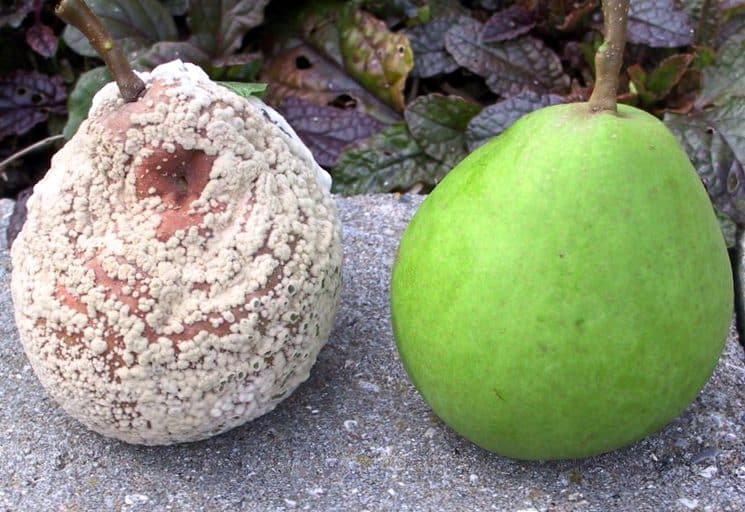
If the fruits have turned black, then the weevil may be the cause of the spread of the infection.
Varieties resistant to moniliosis
Disease-resistant varieties should be tried. Which include:
- October;
- Saint Germain;
- Cheremshina;
- Aurora;
- Conference;
- Augustine;
- Trembita.
But such a variety has not yet been bred so that it is completely protected from infection. Therefore, regular gardening should be carried out.
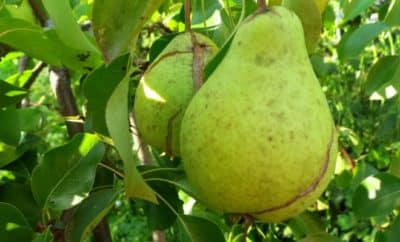
Harvest conservation measures
Control measures can be different, everyone can choose the most suitable option for themselves.
Chemical treatment
The plant is processed one month before technical maturity. When the fruits are ripe and begin to rot, processing is prohibited. Suitable preparations:
- "Hom";
- "Polykhom";
- bordeaux liquid;
- Oxyhom;
- copper sulfate.
If time is missed and rot is noticed during maturation, then you can treat it with the drug "Fitosporin". They are processed weekly until harvest is complete.
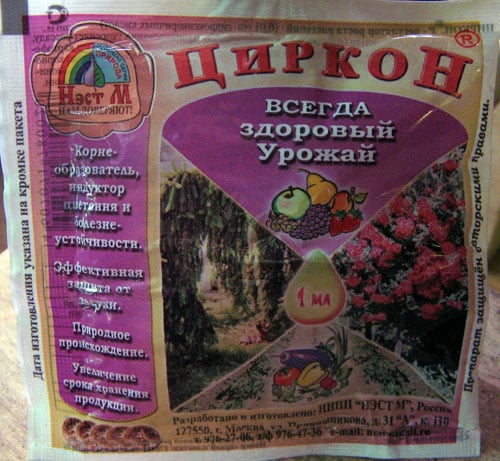
At the first signs of illness, Zircon will help. Processing is started as soon as the first rotten specimen was found. This will help keep healthy fetuses from being damaged.
Folk remedies
At an early age, the plant will help the plant cope with rot with simple tools that do not harm the environment:
- If the fruits begin to dry and rot from the inside, citric acid (40 g) and ferrous sulfate (25 g) diluted in water (10 l) will help. The prepared solution is stored for no more than 2 weeks. Spray the pear if rot is detected.
- A solution of soap (50 g), water (9 l) and ash (500 g) will help to cope with pests.
- A good anti-rot remedy is colloidal sulfur.

If the disease has become widespread, then it is better to use chemicals.
Correct care
If the fruits dry out and rot, then the main reason lies in illiterate care and non-observance of the basic rules. If the tree is old and the reason for rot is only this, then the harvest is unripe. Then spread in the basement on a layer of newspaper. This activity will help the fruit ripen and not be affected by rot.
If the plant develops moniliosis, then it is necessary to carry out in the autumn:
- Sanitary pruning. Remove all affected branches, fruits, leaves.
- The carrion is collected and buried in the ground. The minimum depth is 1.5 meters.
- Rotten specimens should not be thrown into the compost pit. The bacteria have a good survival rate and will pass back to the plant at the first feeding.
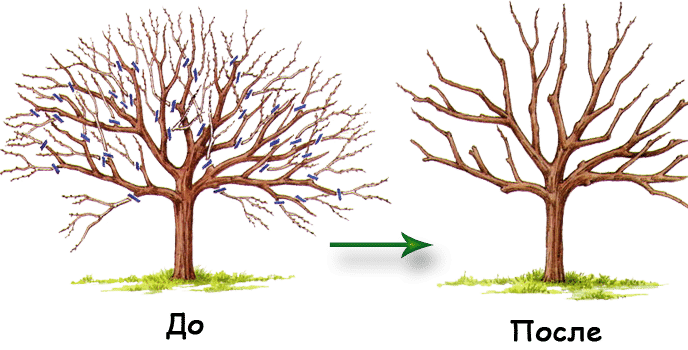
Diseases are spread by pests. They spread spores and infect the fruit from the inside. To eliminate the disease, the plantings are regularly treated with the necessary preparations on a regular basis.A healthy tree is easier to resist infections, so proper and timely feeding will help the tree to be strong.Weeds should be removed regularly. To reduce the amount of weeding, the area around the trunk is mulched.
Helper plants
To protect against pests, it is recommended to plant around the pear:
- Marigold. They repel many pests with their smell. Also, decoctions and infusions are prepared from flowers, with the help of which the plant is treated from rot.
- Moth moths bypass trees, next to which bitter wormwood and elderberry grow.
- Mint.
- Sagebrush.
- Thyme.

Well-distributed repellent plants will help to heal the plantings. Using them on your site in combination with preventive measures, you will be able to achieve a high yield of healthy fruits.
Gardener mistakes and prevention of garden rot
Common mistakes:
- The fallen carrion is not removed. Fallen and infected fruits must be collected and destroyed daily. They are the source of a disease that is easily transmitted by pests.
- The whole crop is not harvested. Overripe fruits remaining on the branches are easily infected with a fungus and are the source of the disease, which will move to a new crop next year. Therefore, it is necessary to remove ripe fruits in time.
For prevention, it is required to protect the plant from pests and monitor the condition of the crown, preventing its thickening.
